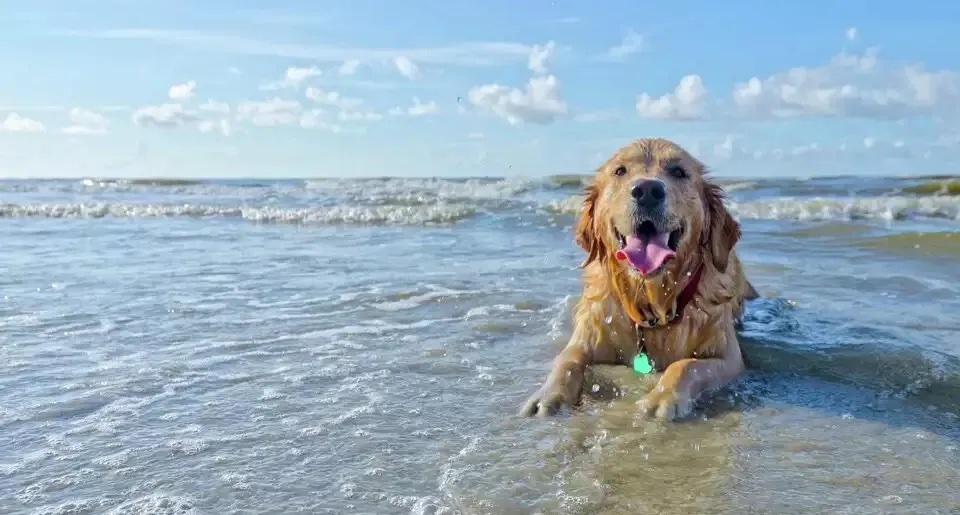
Summer is an exciting season because it brings fun activities for the warmth and water! Our pets are our family members, and we want to include them in on the fun! In order to celebrate the summer season, there are important safety tips to keep top of mind to keep both you and your pet safe. Our Shelter Medical Director, Dr. Weekes, provides her top summer safety tips below:
SUMMER CELEBRATIONS
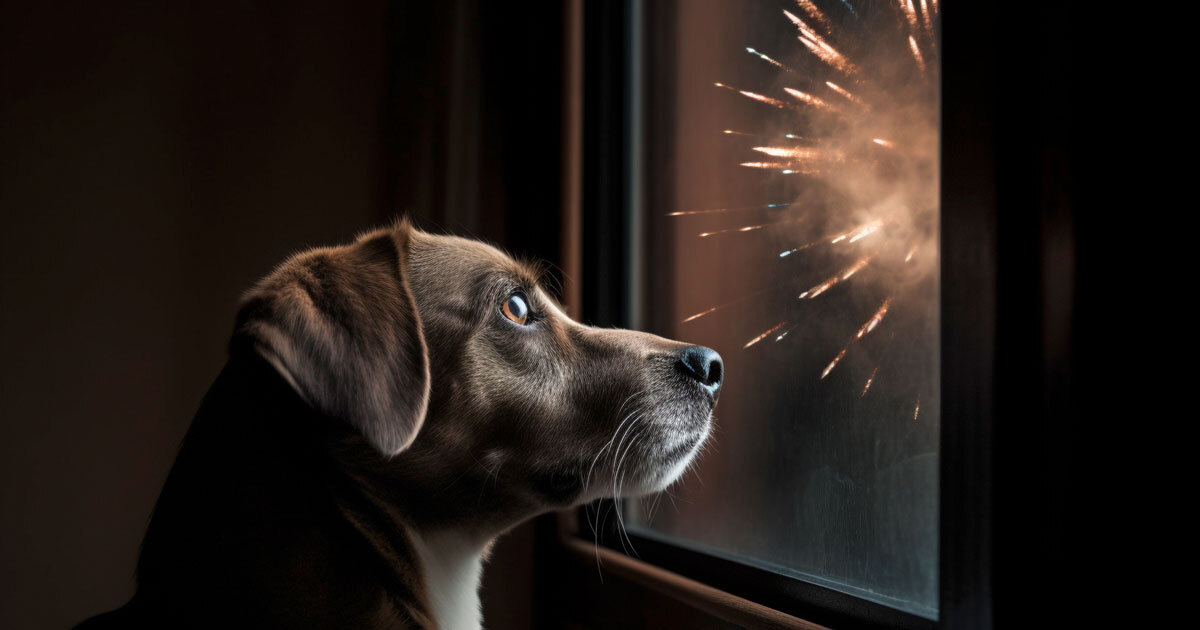
Image Credit: Vet Times (https://www.vettimes.co.uk/news/act-now-to-help-dogs-cope-with-fireworks-pet-owners-urged/)
With summer holidays come barbecues, fireworks, and other celebrations! These can include loud noises that easily frighten some pets, such as thunderstorms or fireworks. It is important to keep your pet relaxed during these events by following these tips:
- Keep your pets inside if you know they are likely to get frightened and try to flee.
- Close all windows and doors.
- Exercise your pets beforehand if you know there is going to be an event later that day. This will allow them to expend some energy and be more relaxed during the celebration.
- Try turning on white noise, a fan, or a radio to muffle the sound and keep your pets calm.
- Never set off fireworks around your pets to protect them from potential burns and trauma.
- In the event that your pet gets loose, ensure they are wearing a collar with the most up-to-date contact information and are microchipped. This is the best way to be proactive in reuniting with your pet if someone would find them or bring them to a local shelter.
TICKS AND OTHER INSECTS
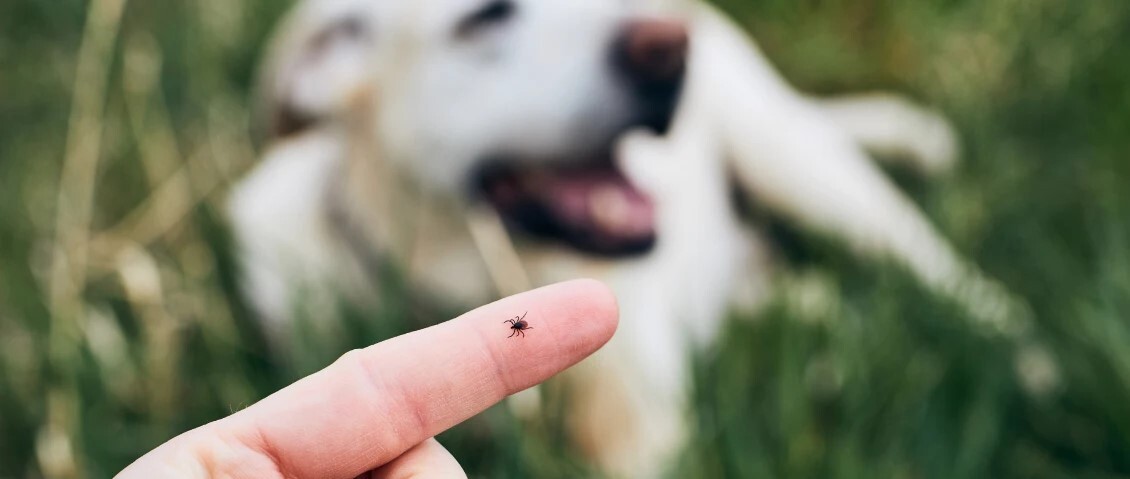
Image Credit: Thrive Pet Healthcare (https://www.thrivepetcare.com/thrive-guide/tick-prevention-guide-dogs)
With the heat comes the peak time for ticks and other insects to come out and find animals to latch onto. Dr. Weekes recommends having your pet on a flea and tick preventative. It is also important to have them on a heartworm preventative which is spread through mosquito bites. You should have your pet on these preventatives consistently all year but especially during the summer months. There are many options to choose from, including topical, oral, and collars. Talk with your veterinarian to see the best choice for your pet and their individual needs.
If you plan on spending time with your pup outdoors in wooded or long grass areas, you will want to follow these tips:
- After spending time outdoors, be sure to conduct a thorough check for ticks over your dog’s full body, especially inside the ears and in between the paws where they can hide. If your dog has a dense coat, flip their fur backward with your hand and check their skin this way.
- Ticks can be as small as a pencil tip when they first attach, so having acute eyesight during the tick check is key.
- Give your pup a bath right after a long walk or being outside in wooded areas. Brush them after their bath as well to keep their skin and coat clean. Bathing them and having their fur down can help you spot ticks easier, allowing you to catch one that may have been hiding in their coat.
HEAT

Image Credit: Sarasota Veterinary Center (https://sarasotaveterinarycenter.com/news/hes-heated-how-to-identify-symptoms-of-heatstroke-in-dogs/)
One of the main concerns with summertime is high temperatures and hot surfaces outside. Remember if you would not want to walk barefoot on a surface, your pet would not want to either. Dog and cat paw pads are sensitive to hot temperatures, especially asphalt, concrete, and even sand at the beach. If you plan on being out for the day in the heat, bring fresh, clean water and a container for them to drink out of. Consider taking your pet on walks either early morning or late evening since there will be cooler temperatures and no direct sun.
If you notice any of the following signs of heat stroke, seek emergency medical treatment right away:
- Excessive panting
- Excessive drooling
- Weakness/Lethargy
- Vomiting
- Unsteady gait or strolling
- Diarrhea
- Deep red or purple tongue and/or gums
- Glazed-over eyes
If you notice your dog having any of these symptoms of heat stroke, move them to a cool, shaded area with a fan. Avoid putting them directly into a cold area, such as straight into cold water, since this can be harmful to their body going from one extreme to the other so quickly. Give them small amounts of water at a time and immediately call your veterinarian.
It is important to note that you should never leave your pet unsupervised in a car, especially during the summer months when it is hot, even if you have the windows cracked. According to the American Veterinary Medical Association, the inside of a car parked in 70-degree weather can easily reach 100 degrees in just 20 minutes. In even warmer weather, idle cars can reach an internal temperature of 140 degrees Fahrenheit in less than an hour.
Be extra cautious with brachycephalic dogs (pugs, bulldogs, etc.) and cats (for example, Persians) due to them having flat faces and being more susceptible to negative effects from the heat. You will want to have caution with pets that are elderly, overweight, or have heart and lung conditions as well.
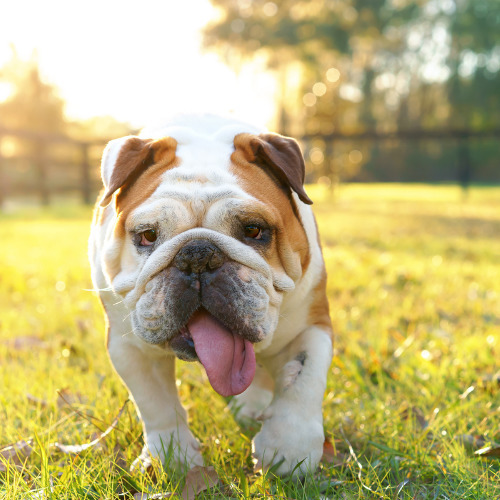
Image Credit: SpiritDog (https://spiritdogtraining.com/behavior/english-bulldogs-live-outside/)
SWIMMING

Image Credit: Union Lake Pet Services (https://unionlakepetservices.com/blog/where-can-i-take-my-dog-swimming-safely)
Many breeds of dogs love the water and jump right in whenever they have the chance to swim or fetch toys! With any body of water, whether a stream, river, lake, pool, or ocean, there are dangers to be aware of to protect you and your pet.
Here are Dr. Weekes’ best water safety tips:
- Ocean water is not safe for animals to drink due to the high salt concentration. This can make your pet overheat and dehydrate quicker.
- It is also not ideal for pets to drink from lakes and streams as well since parasites and other bacteria can live in these bodies of water.
- You never want to allow your pet to drink from the pool either since there are harmful chemicals and chlorine used to clean the pool. These can be toxic to animals.
- Never leave your pet unsupervised in or around a swimming pool. With this in mind, not every dog can swim, so be cautious if your dog would accidentally fall in.
- They do make flotation devices if you are going to take your pet on a boat. We recommend you purchase one for your pet to wear when out on a boat or kayak, just as you would wear one for your own safety to prevent drowning.
- If your dog has floppy ears and they are swimming, thoroughly dry their ears when they are finished to prevent ear infections.
- We recommend you bathe your pet after swimming to remove any bacteria, salt from the beach, or chlorine from the pool.
ALLERGIES
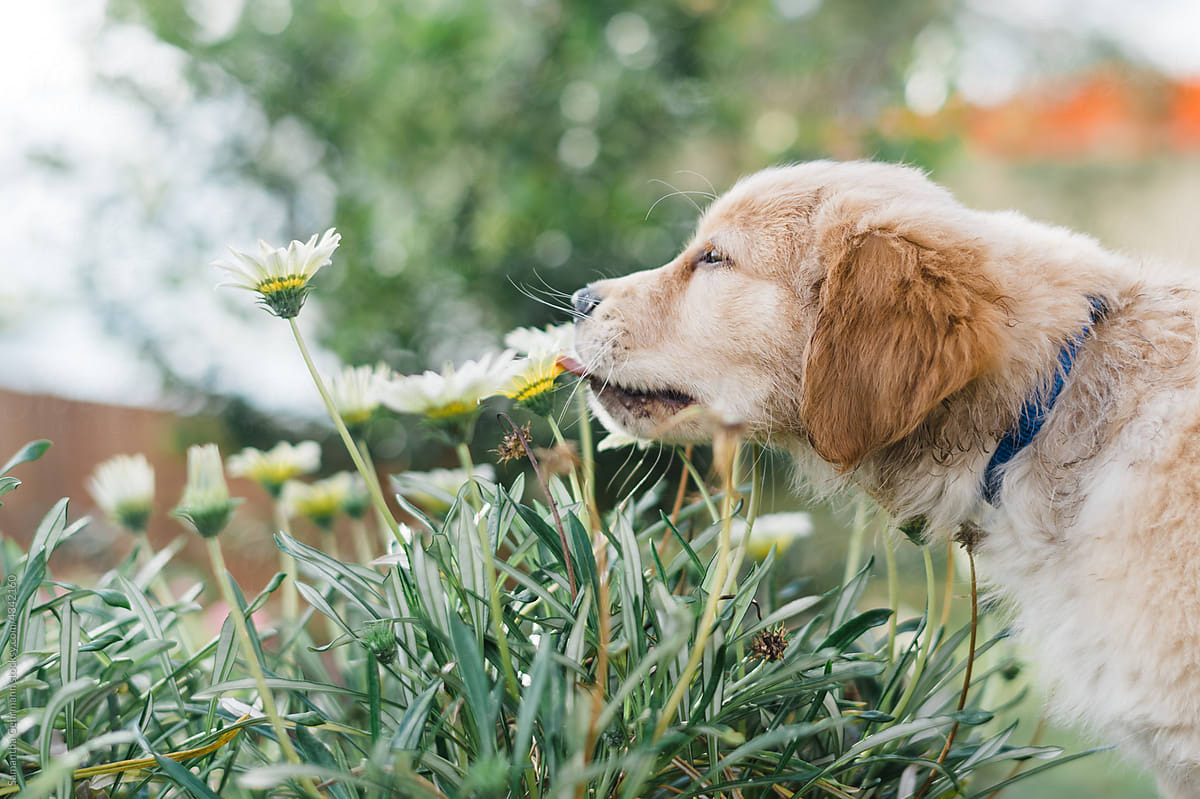
Image Credit: Stocksy (https://www.stocksy.com/photo/4342160/golden-retriever-puppy-sniffing-and-eating-flowers)
Just like people, pets can have allergic reactions to certain insects, such as bee stings. If your pet experiences any of the following symptoms of an allergic reaction, take them to an emergency clinic right away:
- Facial swelling
- Severe lethargy
- Respiratory distress (trouble breathing)
In conclusion, both you and your pet can have fun while staying safe at the same time this summer! If you have any questions about these summer safety tips, we are always here to help. You can also research these topics for more safety tips; some of our favorite organizations who have also published articles are Best Friends Animal Society and the American Kennel Club.
